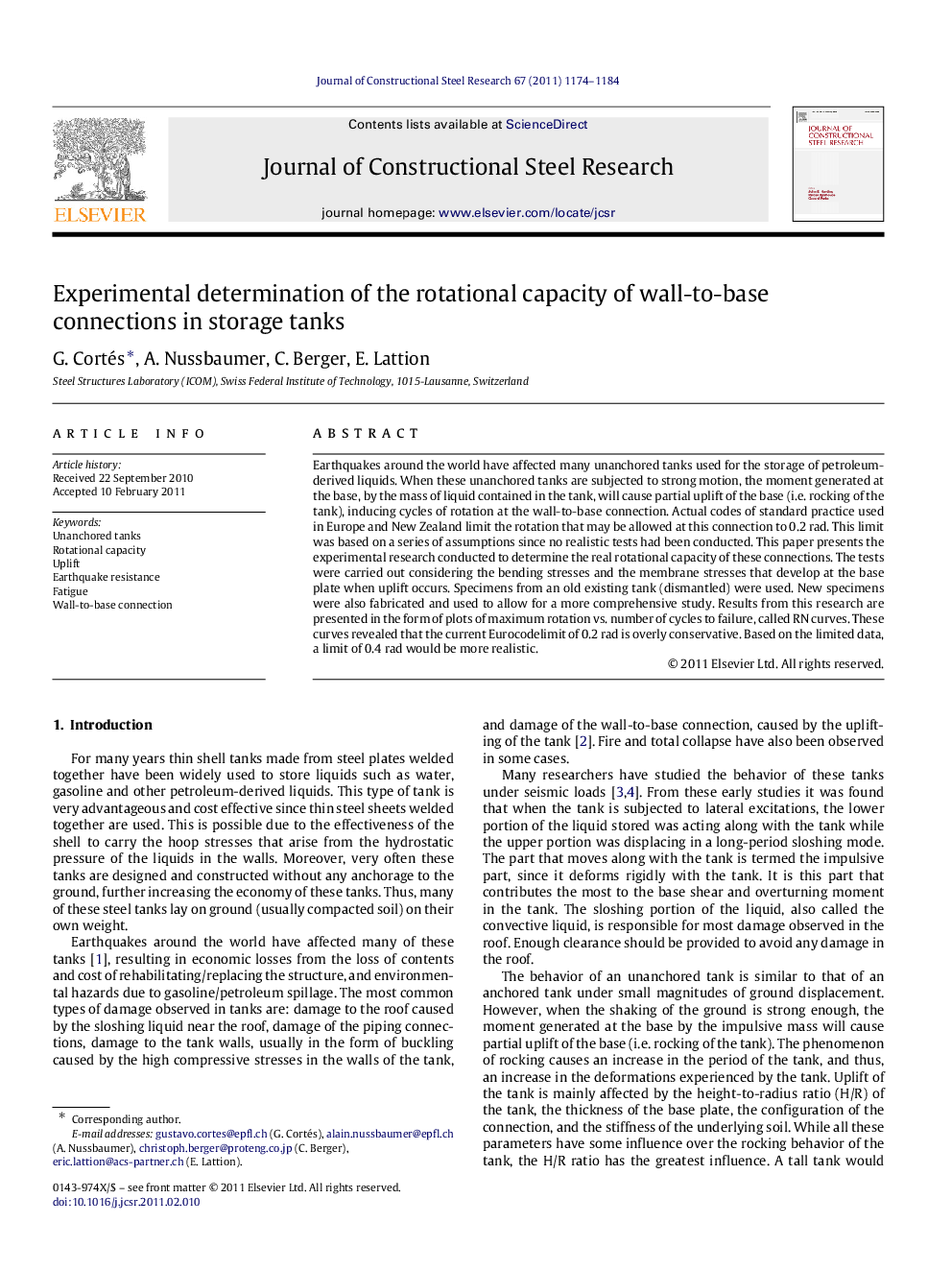| Article ID | Journal | Published Year | Pages | File Type |
|---|---|---|---|---|
| 285438 | Journal of Constructional Steel Research | 2011 | 11 Pages |
Earthquakes around the world have affected many unanchored tanks used for the storage of petroleum-derived liquids. When these unanchored tanks are subjected to strong motion, the moment generated at the base, by the mass of liquid contained in the tank, will cause partial uplift of the base (i.e. rocking of the tank), inducing cycles of rotation at the wall-to-base connection. Actual codes of standard practice used in Europe and New Zealand limit the rotation that may be allowed at this connection to 0.2 rad. This limit was based on a series of assumptions since no realistic tests had been conducted. This paper presents the experimental research conducted to determine the real rotational capacity of these connections. The tests were carried out considering the bending stresses and the membrane stresses that develop at the base plate when uplift occurs. Specimens from an old existing tank (dismantled) were used. New specimens were also fabricated and used to allow for a more comprehensive study. Results from this research are presented in the form of plots of maximum rotation vs. number of cycles to failure, called RN curves. These curves revealed that the current Eurocodelimit of 0.2 rad is overly conservative. Based on the limited data, a limit of 0.4 rad would be more realistic.
Research highlights► Unanchored tanks subjected to strong motion may undergo partial uplift of the base. ► Uplift at the base plate induces rotation at the wall-to-base connection. ► Codes of standard practice used in Europe and New Zealand limit the wall-to-base rotation to 0.2 rad. ► An experimental research was carried to verify the 0.2 rad limit. ► It was found that the current limit is very conservative, a limit of 0.4 rad would be more realistic.
